-
 Bitcoin
Bitcoin $119000
0.17% -
 Ethereum
Ethereum $3664
-2.12% -
 XRP
XRP $3.229
-7.77% -
 Tether USDt
Tether USDt $1.001
0.02% -
 BNB
BNB $783.2
-1.48% -
 Solana
Solana $191.3
-5.26% -
 USDC
USDC $1.000
0.03% -
 Dogecoin
Dogecoin $0.2450
-7.74% -
 TRON
TRON $0.3115
-1.61% -
 Cardano
Cardano $0.8229
-6.80% -
 Hyperliquid
Hyperliquid $44.17
-2.93% -
 Stellar
Stellar $0.4343
-7.23% -
 Sui
Sui $3.792
-4.09% -
 Chainlink
Chainlink $18.38
-5.73% -
 Hedera
Hedera $0.2491
-7.79% -
 Bitcoin Cash
Bitcoin Cash $518.1
-1.51% -
 Avalanche
Avalanche $24.13
-5.84% -
 Litecoin
Litecoin $113.9
-5.41% -
 UNUS SED LEO
UNUS SED LEO $8.974
-0.21% -
 Shiba Inu
Shiba Inu $0.00001400
-7.98% -
 Toncoin
Toncoin $3.215
-2.09% -
 Ethena USDe
Ethena USDe $1.001
0.03% -
 Polkadot
Polkadot $4.178
-6.84% -
 Uniswap
Uniswap $10.38
-3.05% -
 Monero
Monero $317.8
-1.85% -
 Bitget Token
Bitget Token $4.733
-1.94% -
 Pepe
Pepe $0.00001293
-8.20% -
 Dai
Dai $1.000
0.02% -
 Aave
Aave $292.8
-4.74% -
 Bittensor
Bittensor $430.1
-3.67%
What to do if the mining pool DNS is polluted? How to change the backup address?
If your mining pool's DNS is polluted, switch to a different DNS server or use the pool's IP address directly to maintain stable connections and mining efficiency.
May 17, 2025 at 06:21 am
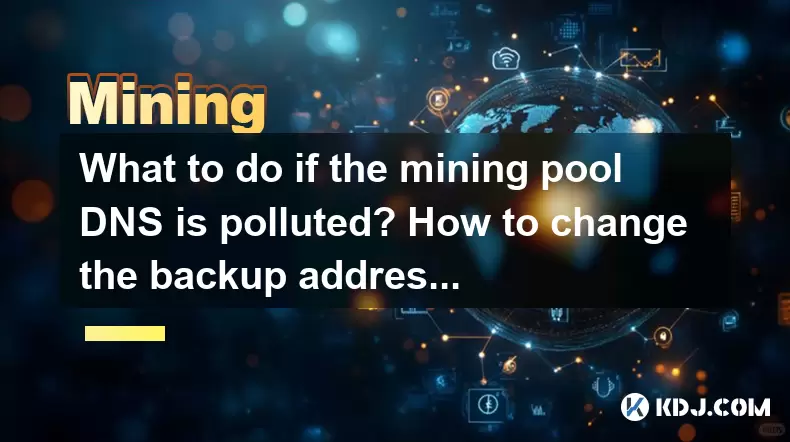
If you're experiencing issues with your mining pool DNS being polluted, it's important to take immediate action to ensure your mining operations continue smoothly. DNS pollution can lead to connectivity issues, causing your miners to fail in connecting to the mining pool, resulting in lost mining time and potential revenue. In this article, we will guide you through the steps to diagnose and resolve DNS pollution issues with your mining pool, as well as how to change your backup address to ensure continued mining efficiency.
Identifying DNS Pollution in Your Mining Pool
The first step in resolving DNS pollution issues is to identify if your mining pool's DNS is indeed polluted. Signs of DNS pollution include frequent disconnections from the mining pool, slower connection times, or complete inability to connect to the pool's servers. To confirm DNS pollution, you can use online tools or command-line utilities to check the DNS resolution of your mining pool's domain.
- Using online DNS lookup tools: Websites like
dnschecker.orgallow you to check the DNS records of your mining pool's domain from multiple global locations. If you see inconsistent or incorrect IP addresses returned for the same domain, it's a strong indicator of DNS pollution. - Using command-line tools: On your computer or mining rig, you can use the
nslookupcommand in the terminal to check the DNS resolution. For example, if your mining pool's domain ispool.example.com, you would enternslookup pool.example.com. If the returned IP addresses do not match the official IP addresses of your mining pool, you are likely experiencing DNS pollution.
Resolving DNS Pollution
Once you've confirmed that your mining pool's DNS is polluted, you need to take steps to resolve the issue. There are several approaches you can take to bypass polluted DNS records and ensure a stable connection to your mining pool.
Using a different DNS server: One of the simplest ways to resolve DNS pollution is to switch to a different DNS server. Public DNS services like Google's (8.8.8.8) or Cloudflare's (1.1.1.1) are often more resistant to DNS pollution. You can change your DNS settings on your router or directly on your mining rig's operating system.
- On Windows: Go to
Control Panel>Network and Internet>Network and Sharing Center>Change adapter settings. Right-click on your network connection, selectProperties, then selectInternet Protocol Version 4 (TCP/IPv4), and clickPropertiesagain. Here, you can enter the new DNS server addresses. - On Linux: Open the terminal and edit the
/etc/resolv.conffile with a text editor like nano or vim. Add lines likenameserver 8.8.8.8andnameserver 8.8.4.4to use Google's DNS servers. - On macOS: Go to
System Preferences>Network, select your connection, clickAdvanced, then go to theDNStab. Click the+button to add new DNS servers like 8.8.8.8 and 8.8.4.4.
- On Windows: Go to
Using the mining pool's IP address directly: If changing DNS servers doesn't resolve the issue, you can try connecting to your mining pool using its IP address directly. You can find the IP address of your mining pool by using the
nslookupcommand or contacting the pool's support for the correct IP addresses.- In your mining software: Replace the mining pool's domain name with its IP address in your mining software's configuration. For example, if you're using a mining software like
cgminer, you would change theurlparameter fromstratum+tcp://pool.example.com:3333tostratum+tcp://192.0.2.1:3333, where192.0.2.1is the IP address of the pool.
- In your mining software: Replace the mining pool's domain name with its IP address in your mining software's configuration. For example, if you're using a mining software like
Changing the Backup Address in Your Mining Pool
In addition to resolving DNS pollution, it's crucial to have a backup address set up for your mining pool. This ensures that if the primary pool becomes unavailable, your miners can automatically switch to the backup address to continue mining without interruption.
- Locate the backup address settings: Most mining pools have a section in their user interface where you can configure backup addresses. This is usually found in the settings or configuration section of your account.
- Enter the backup address: You will need to enter the domain name or IP address of your backup mining pool. Ensure that the backup pool supports the same cryptocurrency and mining algorithm as your primary pool.
- Save and test the configuration: After entering the backup address, save the settings and test them by simulating a disconnection from your primary pool. Ensure that your miners automatically switch to the backup pool and continue mining.
Monitoring and Maintenance
After resolving DNS pollution and setting up a backup address, it's important to continuously monitor your mining operations to ensure they are running smoothly. Regularly check your mining software logs for any signs of connectivity issues or disconnections. Additionally, stay updated with any announcements from your mining pool regarding server changes or maintenance that could affect your mining operations.
- Using monitoring tools: Consider using mining monitoring tools like Awesome Miner or Minerstat to keep an eye on your miners' performance and connectivity. These tools can alert you to any issues in real-time, allowing you to take action before significant downtime occurs.
- Keeping software up to date: Ensure that your mining software and operating systems are up to date with the latest patches and updates. This can help prevent connectivity issues caused by software bugs or security vulnerabilities.
Troubleshooting Common Issues
Even after taking steps to resolve DNS pollution and setting up a backup address, you may still encounter issues. Here are some common problems and their solutions:
- Intermittent disconnections: If you're experiencing intermittent disconnections, check your internet connection stability and ensure your router's firmware is up to date. Additionally, consider using a wired connection instead of Wi-Fi for more reliable connectivity.
- Backup pool not connecting: If your miners fail to switch to the backup pool, double-check the backup address settings in your mining software and ensure that the backup pool is operational. Contact the backup pool's support if you continue to experience issues.
- Slow mining performance: If your mining performance is slower than expected after resolving DNS issues, check your mining software's configuration to ensure it's optimized for your hardware. Additionally, monitor the pool's hashrate and difficulty to ensure they are within expected ranges.
FAQs
Q: Can DNS pollution affect all miners connected to the same pool?
A: Yes, DNS pollution can affect all miners connected to the same pool if they are using the same polluted DNS servers. However, miners using different DNS servers or connecting directly via IP addresses may not be affected.
Q: Is it safe to use public DNS servers for mining?
A: Generally, using public DNS servers like Google's or Cloudflare's is safe for mining. These servers are well-maintained and less likely to be polluted. However, always ensure you're using secure connections and keep your mining software updated to protect against potential security risks.
Q: How often should I check for DNS pollution?
A: It's a good practice to check for DNS pollution at least once a week, especially if you notice any connectivity issues with your mining pool. Regular monitoring can help you quickly identify and resolve any DNS-related problems.
Q: What should I do if my mining pool goes offline permanently?
A: If your primary mining pool goes offline permanently, you should immediately switch to your backup pool. Additionally, consider joining a new mining pool and updating your miners' configurations to ensure continuous mining operations.
Disclaimer:info@kdj.com
The information provided is not trading advice. kdj.com does not assume any responsibility for any investments made based on the information provided in this article. Cryptocurrencies are highly volatile and it is highly recommended that you invest with caution after thorough research!
If you believe that the content used on this website infringes your copyright, please contact us immediately (info@kdj.com) and we will delete it promptly.
- XRP, Solana, and Institutional Adoption: A New Era for Crypto?
- 2025-07-24 11:10:12
- Dogecoin, Remittix, and Crypto Protocols: The Evolution of Digital Finance
- 2025-07-24 10:50:12
- BlockDAG, Hedera, and Stellar: Charting the Course for Crypto's Future
- 2025-07-24 10:50:12
- BlockDAG's No-Vesting Edge: Can It Outpace Cardano's Price?
- 2025-07-24 11:10:12
- South Korea's Credit Card Industry Embraces Stablecoin Regulations: A New Era?
- 2025-07-24 10:30:12
- Bitcoin, SHIB, and Institutional Momentum: Decoding Crypto's 2025 Trajectory
- 2025-07-24 11:15:12
Related knowledge
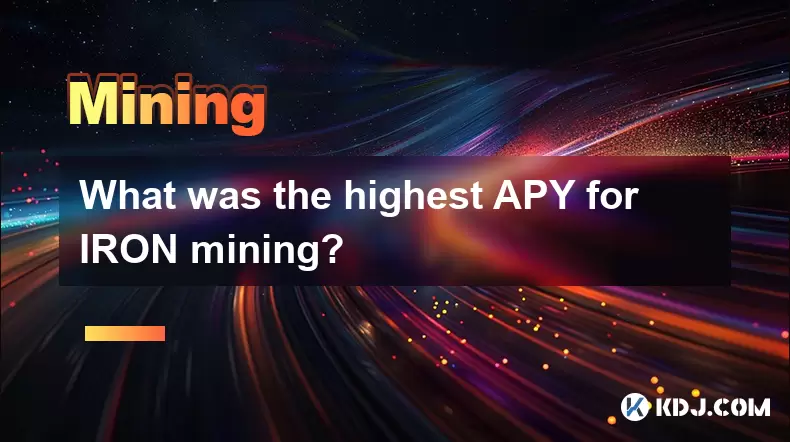
What was the highest APY for IRON mining?
Jul 23,2025 at 05:14am
Understanding IRON Token and Its Mining MechanismThe IRON token is a stablecoin that operates within the Iron Finance ecosystem, primarily on blockcha...

What is impermanent loss in IRON pools?
Jul 23,2025 at 09:00am
Understanding Impermanent Loss in the Context of IRON PoolsImpermanent loss is a phenomenon that affects liquidity providers in decentralized finance ...
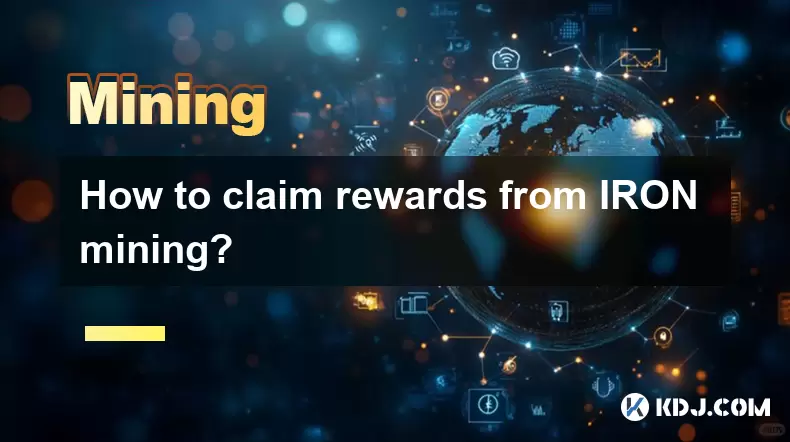
How to claim rewards from IRON mining?
Jul 23,2025 at 02:21pm
Understanding IRON Mining and Reward MechanismsIRON Finance operated as a decentralized finance (DeFi) protocol on the Polygon and Binance Smart Chain...
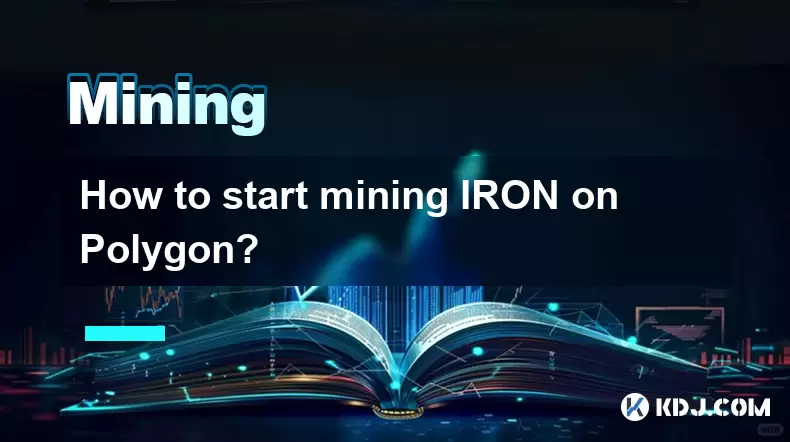
How to start mining IRON on Polygon?
Jul 23,2025 at 08:00pm
Understanding IRON and Its Role on PolygonIRON is a decentralized, algorithmic stablecoin designed to maintain a 1:1 peg with the US dollar. It operat...
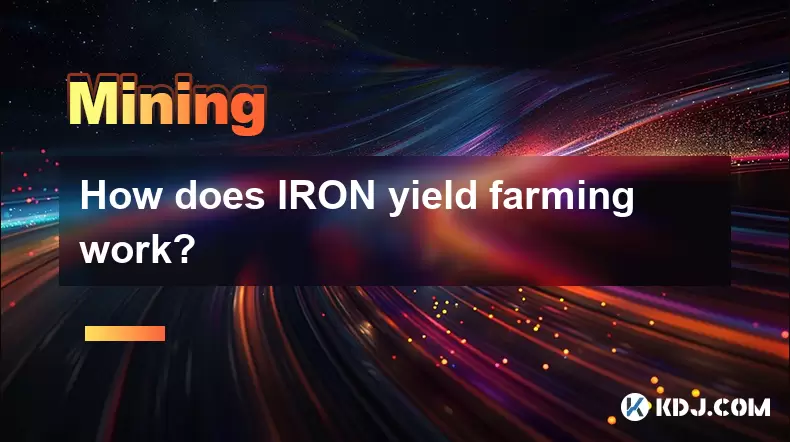
How does IRON yield farming work?
Jul 23,2025 at 10:14pm
Understanding IRON Yield Farming and Its Core MechanismIRON yield farming is a decentralized finance (DeFi) strategy that allows users to earn rewards...
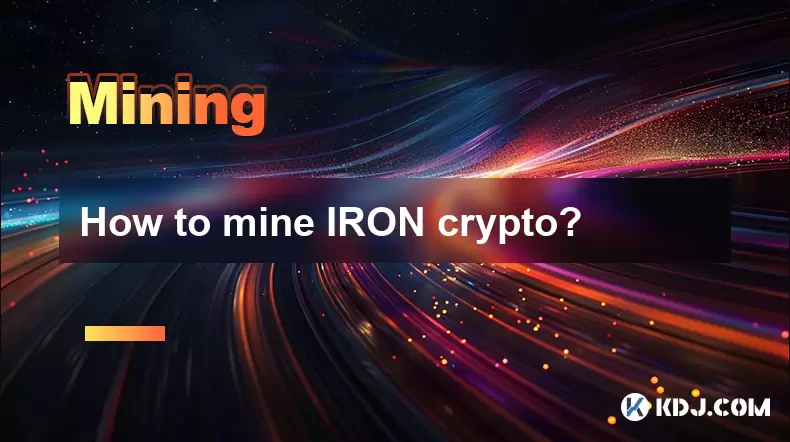
How to mine IRON crypto?
Jul 23,2025 at 07:08pm
Understanding IRON Crypto and Its Mining MechanismIRON crypto is not a standalone blockchain-based cryptocurrency that can be mined using traditional ...

What was the highest APY for IRON mining?
Jul 23,2025 at 05:14am
Understanding IRON Token and Its Mining MechanismThe IRON token is a stablecoin that operates within the Iron Finance ecosystem, primarily on blockcha...

What is impermanent loss in IRON pools?
Jul 23,2025 at 09:00am
Understanding Impermanent Loss in the Context of IRON PoolsImpermanent loss is a phenomenon that affects liquidity providers in decentralized finance ...

How to claim rewards from IRON mining?
Jul 23,2025 at 02:21pm
Understanding IRON Mining and Reward MechanismsIRON Finance operated as a decentralized finance (DeFi) protocol on the Polygon and Binance Smart Chain...

How to start mining IRON on Polygon?
Jul 23,2025 at 08:00pm
Understanding IRON and Its Role on PolygonIRON is a decentralized, algorithmic stablecoin designed to maintain a 1:1 peg with the US dollar. It operat...

How does IRON yield farming work?
Jul 23,2025 at 10:14pm
Understanding IRON Yield Farming and Its Core MechanismIRON yield farming is a decentralized finance (DeFi) strategy that allows users to earn rewards...

How to mine IRON crypto?
Jul 23,2025 at 07:08pm
Understanding IRON Crypto and Its Mining MechanismIRON crypto is not a standalone blockchain-based cryptocurrency that can be mined using traditional ...
See all articles

























































































